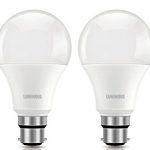Ink: An Inkling of its History
Ink is one of those things that we undoubtedly take for granted; it is integral to our everyday lives and yet we rarely stop to think about how much we rely on it. Every time you read a book, a magazine or a newspaper you are using ink. Every single item of packaging that fights for our attention in every supermarket uses ink. Every photocopy that has been made in the history of mankind uses ink. Every computer printout uses ink. Every stamp and piece of folding money that has ever exchanged hands uses, yep you guessed it…ink. In fact, by trying to imagine a world without ink your thoughts wouldn’t be entirely dissimilar to how the world was during the times of the caveman.
The first recorded examples of the use of ink date back to 2500 BC; both the Egyptians and the Chinese developed ink at around the same time. Particles of carbon, which were used as a colorant, were added to a gum based substance that was extracted from trees. At this time ink was primarily used as a means with which to preserve historical documentation through drawings and hieroglyphs and the development of mankind’s intelligence can be linked with the recognition of the need to preserve history via a means more feasible than tirelessly carving art into rocks with a chisel. The invention of ink afforded mankind the necessary application with which to document it progress, its histories and its lifestyles of the time.
The World Gets Covered in Ink
In 1440 a more modern form of ink emerged as a result of Johannes Guttenberg’s creation of the printing press. Guttenberg’s printing press used a new form of ink that ushered in the use of ink and printing on a production line scale and this led to the first widespread consumption of leaflets and books. The previous kinds of ink that had been used up until this point were too thick to be able to be used with Guttenberg’s printing press; the ink often created blurs in the lettering of Guttenberg’s prints. Guttenberg realised that in order for his invention to be successful he would have to refine the type of ink that he used in his printing press and so a new form of ink was invented that was made from soot, walnut oil and turpentine. The soot was again used as a colorant, the turpentine acted a thinning agent and enabled Guttenberg to create greatly clarity with his printing and the oil allowed for a more durable print that wasn’t prone to fading over time.
All in all, this new kind of ink made the process of widespread printing and reading considerably more popular. The English philosopher, Francis Bacon, noted that printing ‘changed the whole face and state of things throughout the world’. As a result of ink and printing, society no longer needed to rely on word of mouth for its information and this gradually ushered in feelings of greater awareness and independence.
Ink! Ink! You’ve Got Ink Everywhere!
In 1976 the world saw the first use of ink and printing as we know it today. IBM designed a printer that was the size of a whole room and predominantly used by large businesses to print labels and invoices. Over the course of the next ten years there was a growth in the use of personal computers which led to the invention of the first mass market laser printer, the HP Laser Jet and a growing use of HP ink cartridges. This was quickly followed by the rise of desktop publishing applications in businesses, schools and at home; making the use of HP ink cartridges a necessity for those wanting to have a tangible copy of their work.
Other companies such as Brother and IBM were quick to jump on to the bandwagon of personal printing and realized that ink cartridges were a necessity for the technologically dependent. This created a market that charged extortionate prices for ink; in short, it had become a necessity for a wide range of schools, colleges and businesses. However, due to a rise in the number of companies that sold home printers and ink cartridges the prices gradually became more competitive. HP led the field in the design of widespread printing and the development of their HP ink cartridges and so, with a stronghold on the market, they were able to offer the most competitive rates on home printers and HP ink cartridges, often selling their pioneering products to schools and businesses in bulk, leading to an even greater widespread use of printers and ink.
The Internet has given rise to a number of independent ink and printer retailers that are now able to sell HP ink cartridges at competitive prices in a range of colors and sizes.









